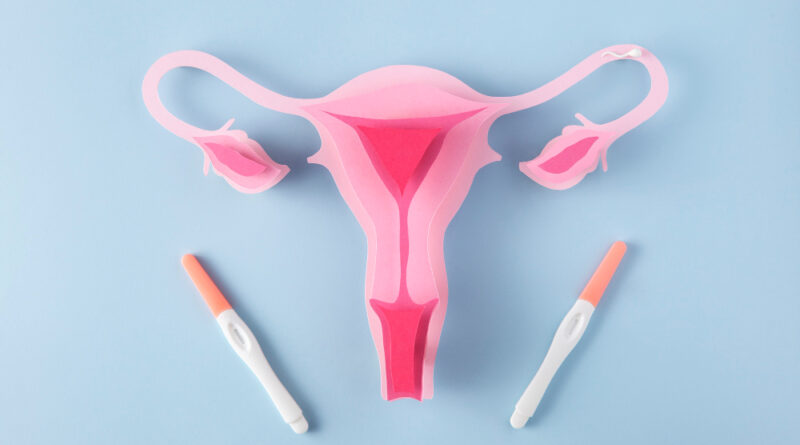How Ovarian & Antral Follicles Relate to Fertility
Originally posted 2023-04-18 07:34:53.
An ovarian follicle is a fluid-filled sac in a woman’s ovaries that holds an undeveloped egg, also called an oocyte. During ovulation, a follicle lets go of a developed egg. Even though multiple follicles start to grow during each cycle, only one of them will usually release an egg. (Rarely, more than one egg is released, increasing the potential for twins.) When the egg is released, the follicle changes into the corpus luteum.
The follicles that don’t yield a mature egg break down. This is called atresia, and it can happen at any point in the development of a follicle. About 99% of the follicles in the ovary will break down and never get big enough to release an egg.
During fertility treatments, doctors keep an eye on how the follicles grow and change. During IVF treatment, superovulation is used to get the ovaries to make many mature follicles at the same time. An antral follicle count (AFC), which is a type of ultrasonography test, may be done as part of fertility testing. This test is used to measure the number of eggs in the ovaries.
You will be interested on: How to Treat Polycystic Ovarian Disease through Ayurveda
What are antral folicles?
If you knew how many follicles were in your ovaries, you could, in theory, figure out how many eggs you still had. Because they are too small to see, you can’t count how many follicles are in the ovaries. But an ultrasound can see a follicle once it gets to a particular stage.
Folicles begin as very, very little bumps. All of the follicles in the ovary start off as primitive follicles. A primordial follicle is only 25 micrometres (or 0.025 millimetres) in diameter. You can’t even see it with your own eyes, let alone on an ultrasound. Every day, hormone messages “wake up” dormant follicles so they can start to grow and mature. As long as they keep living and move on to the next stage, they keep getting bigger and bigger.
The third stage is one of these stages. During this period, the follicle gets a space called the antrum, which is filled with fluid. Follicles that have an antrum are called antral follicles, and they range in size from 2 to 10 mm. An antrum follicle that is 5 mm in size is 200 times bigger than it was when it was a primordial follicle.
Keep reading: Ayurvedic Treatment for Polycystic Ovarian Disease/ PCOS
With an ultrasound, you may see the follicles in the antrum. Researchers have shown that the number of active antrum follicles on the ovaries is related to the number of eggs that may still be available. You still can’t tell how many follicles there are in total, but if the ovaries aren’t making many antral follicles, the ovarian reserves are probably low.
Antral follicles make more anti-mullerian hormone (AMH), which is a hormone that circulates in the blood. Ovarian reserves can also be measured by checking the amount of AMH in the blood. AMH levels can be taken at any time during the cycle, unlike FSH and estradiol, which are most accurate on day 2 of the cycle.
Keep reading : Sexologist in Hyderabad
The Antral Follicle Count (AFC) Test
Transvaginal ultrasonography is used to count the number of antral follicles. This is sometimes done between cycle days 2 and 5. The test could be done as part of a checkup on a woman’s fertility. Or, it could be ordered before a cycle of treatment for infertility.
During this test, the ultrasound technician looks at each ovary and counts the number of follicles that are between 2 and 10 mm. 2 This test may be ordered by your doctor to:
- Evaluate ovarian reserves.
- Make a primary ovarian insufficiency diagnosis.
- Help find out if someone has polycystic ovary syndrome.
- Find out how fertile you are in proportion to your age. (whether you have more, less, or about the same number of follicles compared to others your age)
You will be interested on: How to Cure PCOD
How Many Antral Follicles Are Normal?
As you age, it is typical for your ovarian reserves to go down. So what’s typical for someone who’s 25 might not be normal for someone who’s 38. Still, a count of 3 to 6 follicles in the antral area is modest.
In a classic investigation, antral follicle counts were done on women who had already been shown to be fertile. (Most studies on AFC were done on infertile women.) For these women to be in this study, they had to:
- have regular periods that last anywhere from 21 to 35 days.
- be ovulating, which can be shown on a basal body temperature chart by a rise in temperature.
- have given birth to at least one child during the last year.
- There is no known hormonal or endocrinological disease.
- stopped using birth control at least two months before the trial.
Even if you have few eggs in your ovaries, this does not rule out the possibility of becoming pregnant. But it does indicate that your ovaries might not respond to fertility medicines as well as those of a woman with more ovarian reserves. The results can be affected by both how well the ultrasound professional does their job and how well the ultrasound machine works. If one test gives you bad news, you might want to get a second opinion.
Women under the age of 40 who have a very low number of antral follicles may be told they have primary ovarian insufficiency, also called premature ovarian failure. As a woman ages, her number of antral follicles normally goes down. A large number of antral follicles could indicate polycystic ovarian syndrome (PCOS).
The Role Follicles Play in the Menstrual Cycle
The two main parts of your menstrual cycle are the follicular phase and the luteal phase. During the follicular stage, tertiary-stage follicles are recruited and start a procedure that will eventually lead to ovulation.
Even though there are multiple follicles at the start of this race, only one or two will mature and produce an egg. If you take fertility medicines, a few of your follicles may reach the stage where they release an egg. The hair follicles themselves are what?
- Providing food and protection for the oocyte during oogenesis
- Putting out important hormones for reproduction
- After ovulation, the follicle changes into the corpus luteum, which lets out the hormone progesterone. (It is vital to keep the uterine lining thick and lush for a pregnancy to implant.)
You will be Interested on : Sexologist in Guwahati
The Follicular Phase of the Menstrual Cycle
The day you get your period is the first day of your follicular phase. During menstruation, the body gets rid of the top layer of endometrial tissue that has grown in preparation for conception. The lining of your uterus will be thin at the end of your period. After the egg is released, the lining will start to expand and become thicker again.
But when you are having your period, your ovaries are getting ready to release the next egg. Your ovary will start to grow between five and six follicles. The pituitary gland makes the hormone FSH, which is short for follicle-stimulating hormone. This hormone is what makes the follicles get bigger.
Keep reading : Sexologist in Bangalore
As the hair follicles get bigger, they let out more oestrogen. When there is more oestrogen in the body, the pituitary gland makes less FSH. Even though you started with five or six follicles, only one or two will grow to full size. When there is less FSH, the smaller follicles grow more slowly or even cease growing. The bigger follicle, on the other hand, keeps expanding steadily.
At some point, one follicle becomes the most important one, and the others cease growing and die. When the follicle is almost as big as it can get, it lets out even more oestrogen.
LH, or luteinizing hormone, is made and released by the pituitary gland when there are very high amounts of oestrogen. This makes the follicle go through its final phases of growth. At last, the follicle will burst open, letting the egg out. This is when the egg is made.
Keep reading: Treating Menstrual Disorders with Ayurveda
Folliculogenesis: The Stages of Follicular Development
You might imagine that follicular development starts and stops during the follicular phase of the menstrual cycle, but that is not true. The whole follicular lifecycle starts before a person is even born, when the ovaries of a growing foetus are initially formed.
At this point, just the first follicles are in the ovaries. Follicles can stay in this “sleeping” state for up to 50 years before they wake up and start to develop. It can take anything from six months to a year for a follicle to grow up and be ready to release an egg.
You will be interested on: Female Infertility Treatment in Manikonda
Many follicles stop growing and die at every stage of follicular development. Not every primitive follicle will progress through each stage. Think of it as a race to get to the ovulation Olympics. Some of the hair follicles will fall out, while others will keep growing. Less than 1% of women ever release an egg from an oocyte. Folliculogenesis is made up of:
- Primordial follicle: The stage that all of the follicles in a newborn baby’s ovaries are in.
- Primary follicles: Starting with puberty and going on until menopause, a few primordial follicles change into primary follicles every day.
- Other hair follicles: Adding theca cells, which will release hormones, is part of the process.
- Tertiary follicles, also called antral follicles, are the last ones. Follicles that have a fluid-filled space called the antrum can be seen with a transvaginal ultrasound.
- Graafian follicule: A follicle that is big enough to release an egg. Each cycle, only one or two of the tertiary follicles will be mature enough to release an egg.
- Corpus luteum: No longer a follicle; grows from the open follicle that let an egg out.
Keep reading: Female Infertility Treatment in Banjara Hills
Follicle Size
If you are going through fertility therapy, your doctor may use an ultrasound to check on how your follicles are growing. During these ultrasounds, the number of follicles that are growing will be measured. The same will be done with them.
Millimetres are used to measure follicles. (mm). Most of the time, your doctor will want to give you a trigger shot, also called an hCG or LH injection, when your follicles are just about to reach their full size. About 18 millimetres A follicle that is ready to release an egg will be between 18 and 25 mm long.
You will be interested on: Female Infertility Treatment in Hyderabad
How Many Follicles Are Required for Fertility Treatments?
Variable fertility therapies have varied goals for the number of follicles. For things like in vitro fertilisation (IVF), you need more follicles.
Follicles Needed for a Clomid Cycle
During a Clomid cycle, you should only have one or two good-sized follicles at most. You might be upset to find out that just one or two of your follicles are big enough to release an egg. But keep in mind that more isn’t always a good thing. Every follicle that was old enough to release an egg could do so, and that egg could be fertilised.
Keep reading: Female Infertility Treatment in Bangalore
You could have twins if you have two follicles. Or you might only get pregnant once. You might not get pregnant at all. Not every woman who ovulates becomes pregnant.
To get a free consultation Call or Whatsapp +91 9995202100
Fill up online consultation form https://www.khokardispensary.com/quick-online-consultation/





